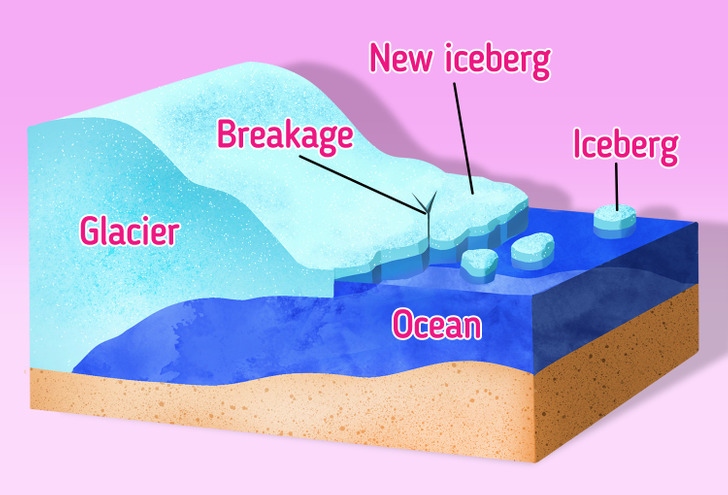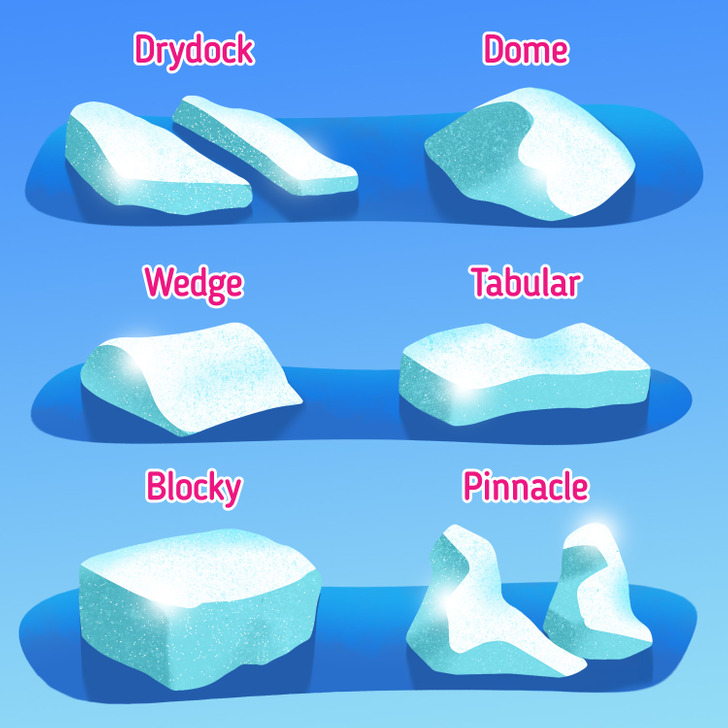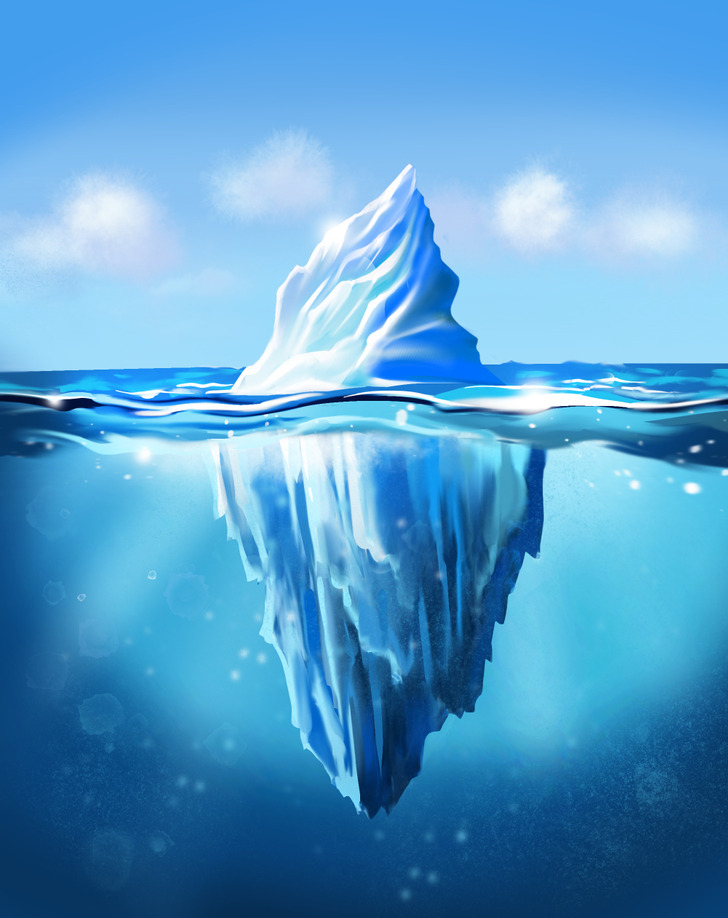How Icebergs Form
5-Minute Crafts would like to tell you about how icebergs form, their types, and how they remain afloat.
How do icebergs form?

Icebergs form when chunks of ice calve or break off from glaciers, ice shelves, or larger icebergs. This is why, even though icebergs float in the ocean, they are not made of salt water, but of frozen freshwater.
Most icebergs in the Northern Hemisphere break off from the glaciers of Greenland. Sometimes they drift south, with currents, into the North Atlantic Ocean. In the Southern Hemisphere, almost all icebergs break off from Antarctica. The largest icebergs recorded broke off from the Ross Ice Shelf of Antarctica.
Icebergs are pieces of ice that are more than 50 feet long, but they can reach a height of more than 300 feet above the sea surface and have a mass of 100,000 tons to more than 10 million tons. Pieces of floating ice less than 15 feet above the sea surface are classified simply as “bergy bits,” and those that are smaller than 3 feet, are called “growlers.”
Types of icebergs

There are 6 main types of icebergs:
- Drydock is an iceberg with a channel that has eroded between its 2 parts.
- Dome is an iceberg with a rounded top.
- Wedge is an iceberg with a steep edge on one side and a slope on the opposite side.
- Tabular is an iceberg with steep slopes and a flat top, with a length-to-height ratio of more than 5:1. This type of iceberg is also known as an ice island.
- Pinnacle is an iceberg with one or more spires.
- Blocky is an iceberg with steep vertical sides and a flat top. It differs from tabular icebergs in that the ratio between its width and height is usually small, and the iceberg is more like a block than a flat sheet.
How do icebergs remain afloat?

We can see only the top of an iceberg above the surface of the water, which follows Archimedes’ Principle of buoyancy. Buoyancy is the upward force that a fluid creates. It counteracts the weight of a partially or fully immersed object. The pressure difference results in an upward force acting on the object. Its value is proportional to the pressure difference. For this reason, an object whose average density is greater than the density of the liquid in which it’s immersed tends to sink. Conversely, if the object is less dense than the liquid, the force can keep the object afloat.
Since the density of pure ice is about 57 lb/cu ft, and the density of seawater is about 64 lb/cu ft, about 1/10 of the total volume of an iceberg is pushed to the surface. The other90% of an iceberg remains underwater.